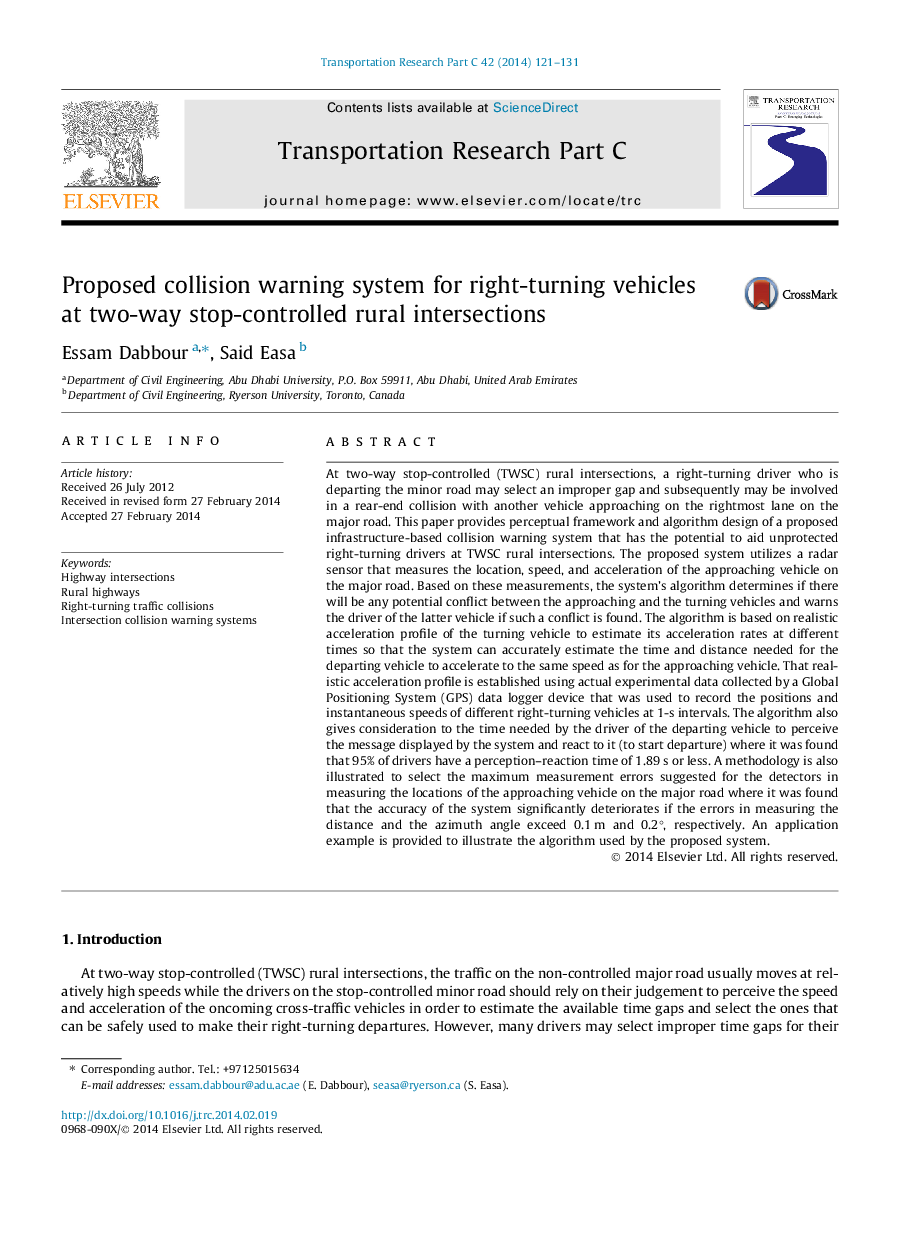| Article ID | Journal | Published Year | Pages | File Type |
|---|---|---|---|---|
| 525124 | Transportation Research Part C: Emerging Technologies | 2014 | 11 Pages |
•A collision warning system is proposed for semi-controlled rural intersections.•The proposed system considers the perception–reaction time of departing driver.•The system considers the acceleration profile of the departing vehicle.•Field GPS data were used to establish acceleration profile of the departing vehicle.
At two-way stop-controlled (TWSC) rural intersections, a right-turning driver who is departing the minor road may select an improper gap and subsequently may be involved in a rear-end collision with another vehicle approaching on the rightmost lane on the major road. This paper provides perceptual framework and algorithm design of a proposed infrastructure-based collision warning system that has the potential to aid unprotected right-turning drivers at TWSC rural intersections. The proposed system utilizes a radar sensor that measures the location, speed, and acceleration of the approaching vehicle on the major road. Based on these measurements, the system’s algorithm determines if there will be any potential conflict between the approaching and the turning vehicles and warns the driver of the latter vehicle if such a conflict is found. The algorithm is based on realistic acceleration profile of the turning vehicle to estimate its acceleration rates at different times so that the system can accurately estimate the time and distance needed for the departing vehicle to accelerate to the same speed as for the approaching vehicle. That realistic acceleration profile is established using actual experimental data collected by a Global Positioning System (GPS) data logger device that was used to record the positions and instantaneous speeds of different right-turning vehicles at 1-s intervals. The algorithm also gives consideration to the time needed by the driver of the departing vehicle to perceive the message displayed by the system and react to it (to start departure) where it was found that 95% of drivers have a perception–reaction time of 1.89 s or less. A methodology is also illustrated to select the maximum measurement errors suggested for the detectors in measuring the locations of the approaching vehicle on the major road where it was found that the accuracy of the system significantly deteriorates if the errors in measuring the distance and the azimuth angle exceed 0.1 m and 0.2°, respectively. An application example is provided to illustrate the algorithm used by the proposed system.
